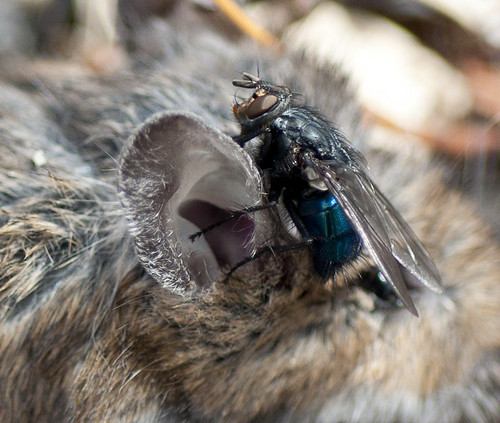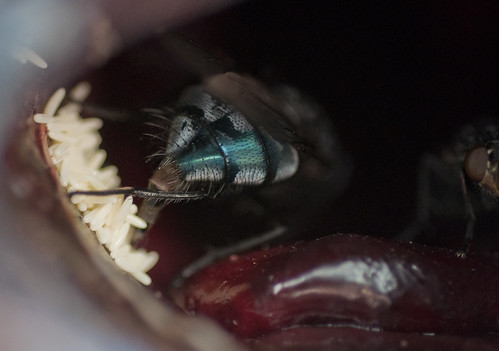As the day progressed and the air warmed further, more flies arrived, and they began to swarm the buck head and lay their eggs.
Yesterday, when the temperatures were hovering around 50°F, there wasn't too much competition for egg-laying space. The flies had their pick of prime ovipositing spots, and their favorites seemed to be the esophagus, mouth, and eye sockets. Today, as temperatures climbed into the low sixties, the flies arrived en masse and laid their eggs wherever they could — on fur, eyelashes, whiskers.
Once the buck head was pretty well-loaded with fly eggs, I relocated it to the ground, tied it to the base of a balsam fir, and concealed it with the branches of last December's Christmas tree. The brush cover will help keep the smell of decomposition at bay, deter unleashed dogs from bothering the head, and protect the maggots and other insect scavengers from cold nights and hungry birds.
On the topic of hungry birds: shortly before relocating the head, Steph and I watched a yellow-rumped warbler execute an impressive aerial maneuver to catch one of the egg-laying flies. It's incredible just how many different species of animals a single corpse can feed, both directly and indirectly.








Nice essay, Jorie.
ReplyDeleteLove it!
ReplyDeleteGreat observations!
ReplyDelete